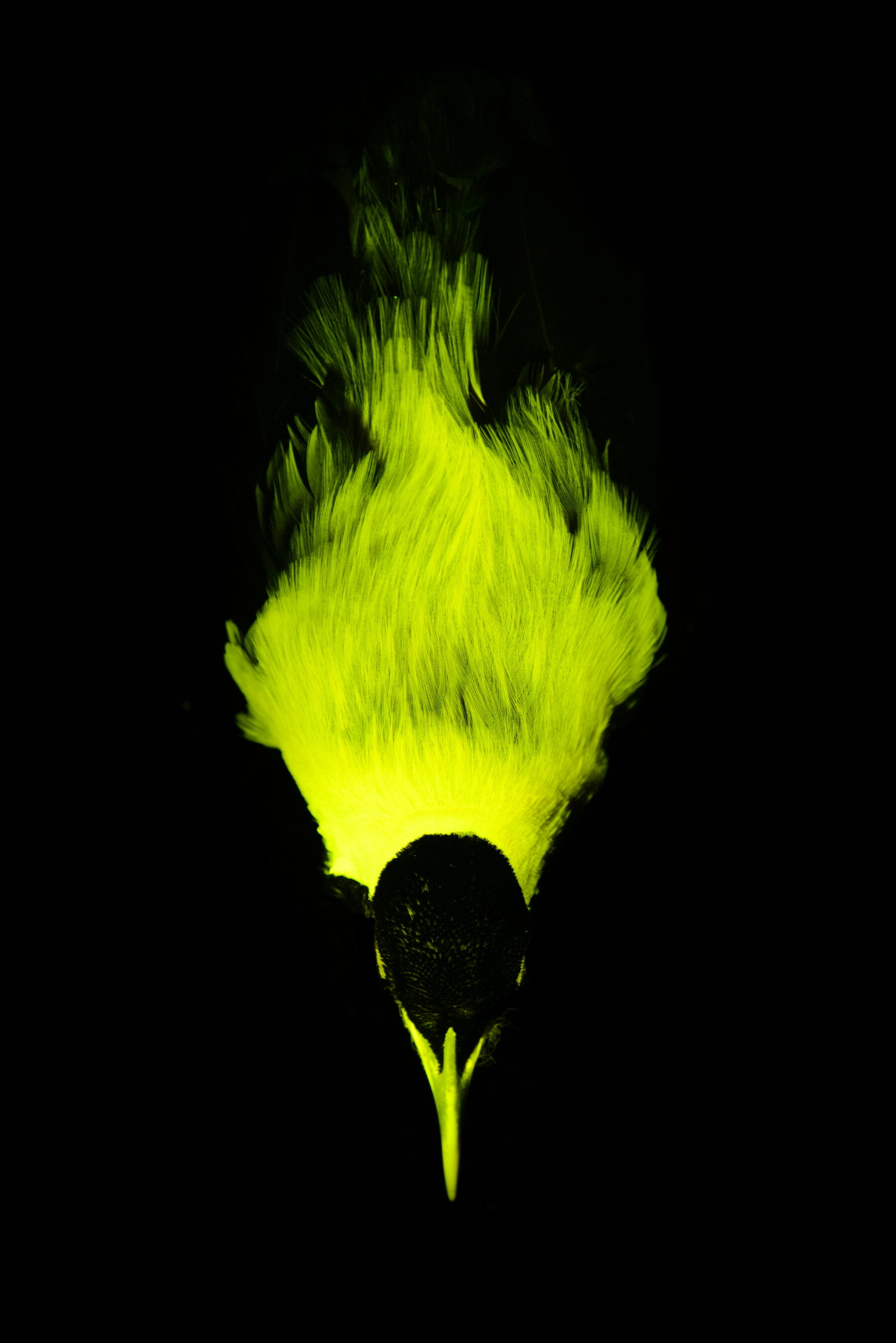Scientists find that 82 percent of birds-of-paradise species show biofluorescence, often on their feathers, throat or inner mouth
Sara Hashemi
Daily Correspondent
February 12, 2025

Scientists found biofluorescence in most species of birds-of-paradise, including the emperor bird-of-paradise (Paradisaea guilielmi), shown here from the American Museum of Natural History's collection. Rene Martin / American Museum of Natural History
Male birds-of-paradise have a lot of tools in their arsenal for attracting potential mates: bright feathers, elaborate dances and, according to new research, the ability to glow.
Scientists have found that 37 of the 45 species of the tropical forest birds are capable of biofluorescence—that is, their feathers absorb blue or ultraviolet (UV) light and emit it back out at lower, visible frequencies. Their findings were published in the journal Royal Society Open Science on Wednesday.
“It seems fitting that these flashy birds are likely signaling to each other in additional, flashy ways,” says Rene Martin, the lead author of the study and a biologist at the University of Nebraska-Lincoln, in a statement.
Our Planet | Birds Of Paradise | Exclusive Clip | NetflixWatch on YouTube Logo
The team studied preserved museum specimens of birds-of-paradise using a specialized photography setup with UV and blue lights, then recorded the wavelengths and color of light emitted from the feathers. “What they’re doing is taking this UV color, which they can’t see, and re-emitting it at a wavelength that is actually visible to their eyes,” explains Martin to Jason Bittel at the
New York Times. “In their case, it’s kind of a bright green and green-yellow color.”
“It may not have the effect of making something look different, but becoming brighter and more eye-catching,” she adds to the
Guardian’s Nicola Davis.
More:
https://www.smithsonianmag.com/smart-news/birds-of-paradise-glow-to-attract-mates-adding-a-flashy-element-to-their-impressive-courtship-displays-180986049/
